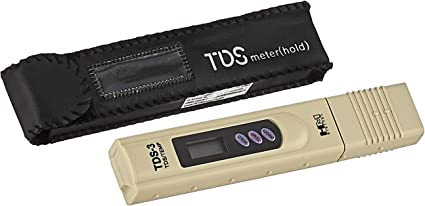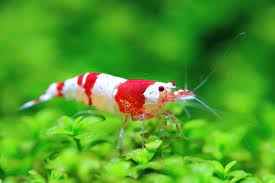What is the Proper TDS for an Aquarium?
How to Utilize a TDS Meter
TDS Basics
A TDS meter can measure all of the organic and inorganic material in molecular form in your water. This includes GH, KH, nitrate, nitrite, etc. Since they are in molecular form, TDS, or Total Dissolved Solids, can more simply be explained as the substances that can not be picked up by filters. Aquarium filters can only catch what comprises TSS (Toal Suspended Solids), which are material things such as plant matter or fish waste.
High concentrations of TDS can reduce water clarity and decrease photosynthesis in aquatic plants. It can also combine with toxic compounds and heavy metals leading to an increase in water temperature. You can use a TDS meter to keep track of how your TDS fluctuates.
So what is the proper TDS level for an aquarium? Unfortunately, the answer is not everyone’s favorite…
It depends…
Finding the Proper TDS
First, it depends on your fish. Some fish are used to native streams of nearly zero TDS water. Others, such as African Cichlids, can live in waters of TDS between 300-400 ppm. It also depends on various substances you may add to your fish tank. Nearly anything that you add to your tank will result in an increase in TDS (water conditioner, plant fertilizer, uneaten food).
TDS = GH + KH + Nitrate + Nitrite + Chlorine + Other Molecular Compounds
The desired level of nitrites and nitrates alike is zero for both fresh and saltwater aquariums. Although a nitrate level of less than 40 ppm is acceptable.
Chlorine is desired to be 0 ppm.
GH (general hardness) is the combination of calcium and magnesium ions found in water. Desired GH will depend on the fish you keep in your aquarium.
As you can see in the chart below, we know KH is typically between 120 and 180 ppm for freshwater and 180-300 ppm for saltwater.
So with all this info in mind, here is an example below this chart on how you can determine the desired Total Dissolved Solids level for your tank.
Computing Desired TDS for Neon Tetra Fish
TDS = GH + KH+ Nitrate + Nitrite + Chlorine + Other Molecular Compounds
- Neon tetras desire soft water so GH = 60-75 ppm*
- Neon tetras desire KH of 70 – 120 ppm*
- Nitrate, Nitrite, Chlorine desired as 0
TDS = (60-75 ppm) + (70-120 ppm)+ 0 + 0 + 0 + Other Molecular CompoundsTDS should be between 130 and 195 ppm + what comes from compounds such as fish waste, plant fertilizers, algae treatment chemicals, etc.
*= Researched from various online articles and forums referenced at the end of the article
Using a TDS Meter
To find a base level of the Total Dissolved Solids coming from “Other Molecular Compounds”, use a TDS meter to measure the TDS of your tap water. This will give you insight as to what substances may be in your tap water. If TDS is over 300 ppm, not only will you want to consider drinking different water, but you may want to reduce the TDS before adding it to your tank. Mix 0 TDS water with tap water to get it to a range of 150-200 ppm before adding it to your aquarium.
Then, continuously monitor the TDS meter as your aquarium runs and as you add any kind of substance to your water. Once you have determined the average TDS of your aquarium from observing for a few days, use a test strip to make sure all of the individual compounds are at their desired levels (nitrate, nitrite, gH, kH, chlorine). If all of these levels are correct, the average TDS you’ve observed is your aquarium’s ideal TDS level. From there, you can keep an eye on your TDS meter and not waste test strips until you see a significant increase in TDS (approx. 10-15%). A spike in aquarium TDS would indicate that one of your tank’s levels is too high. From there, you can use a test strip to diagnose which specific level it is.
High TDS Levels
When TDS levels are too high, your fish are at an even greater risk of danger than your aquarium plants. Fish are largely comprised of water, and when they are in water with high TDS, the high TDS aquarium water wants to equalize with the lower TDS water inside the fish. The aquarium water attempts to pass through the fish until the levels equalize. This affects blood pH, digestion, and its immune system, greatly increasing the risk for disease.
One of the most efficient ways to keep an eye on your TDS is with a meter like this one! It’s cheap, accurate, and gives you instant results.
Plus, it runs off batteries so you don’t need yet another cord in the back of your tank!
So what’s the best deal on a TDS Meter out there?

Let me know what questions you may have and thanks so much for reading on monitoring Total Dissolved Solids in an aquarium!
























I’ve read so many Q&As on the TDS subject, and they all the answers baffle the enquirer with science. I believe that most Aquarists are aware of their Water chemistry however, all the answers should be at laymans terms i.e A good TDS reading for Planted Aquariums or Tropical Fish Aquariums should be Thus….. Giving a load of science to any aquarists just generates emails after emails of more questions…..Finally let the enquiring aquarist get his answers and then he can decide on what maybe the issue, it’s the only way to learn,
Thanks for helping me clarify how to read this devise and what it means.